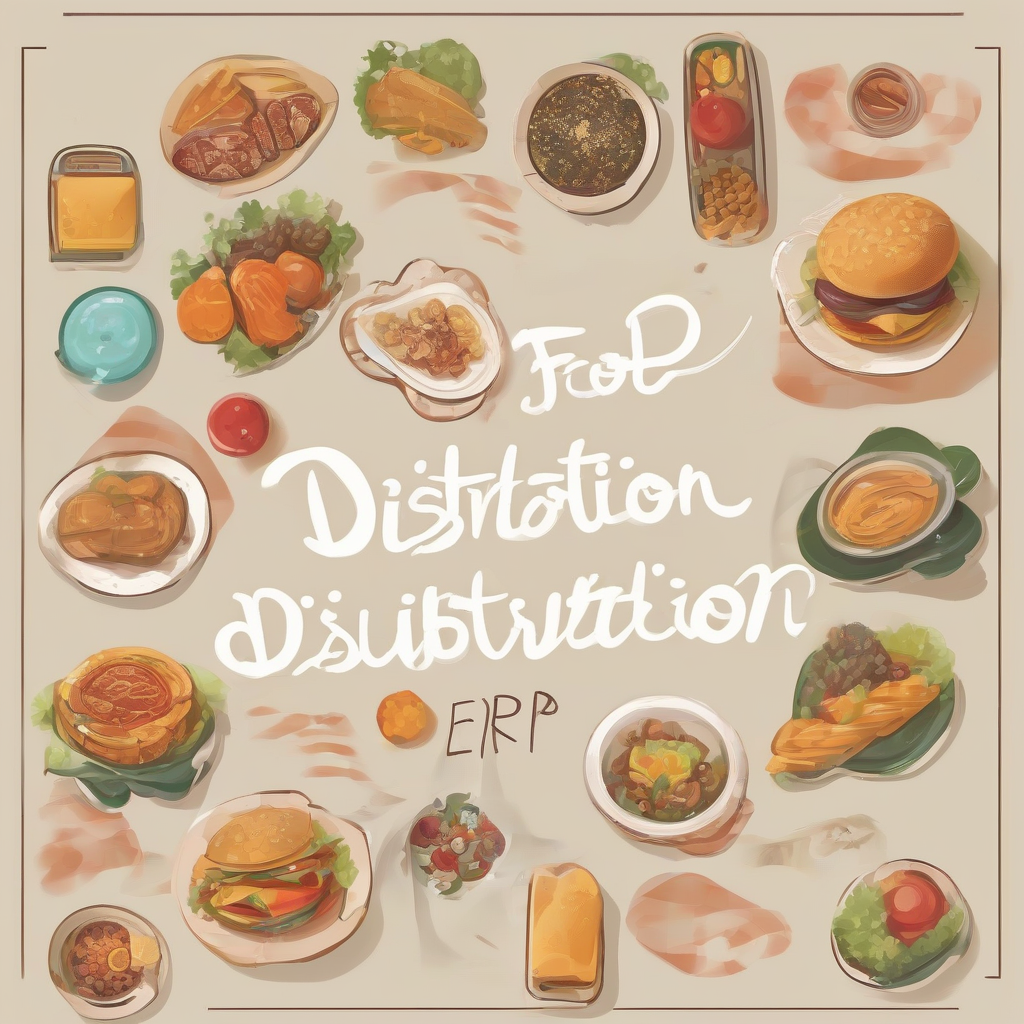Food Distribution ERP: Streamlining Efficiency and Optimizing Supply Chains

Food Distribution ERP: Streamlining Efficiency and Optimizing Supply Chains
In the dynamic and complex world of food distribution, managing intricate supply chains, optimizing logistics, and ensuring product quality and safety is paramount. This is where Enterprise Resource Planning (ERP) systems emerge as powerful tools to revolutionize operations and empower businesses to thrive. Food distribution ERP solutions are specifically tailored to address the unique challenges and demands of the industry, providing comprehensive functionality to streamline processes, enhance visibility, and drive growth.
The Need for Food Distribution ERP Systems
- Complex Supply Chains: Food distribution networks involve multiple stakeholders, including farmers, manufacturers, wholesalers, retailers, and consumers. Managing these interconnected entities requires a robust system to track inventory, manage orders, and ensure smooth flow of goods.
- Strict Regulations: The food industry is heavily regulated to ensure safety and quality. ERP systems can help businesses comply with regulations such as food safety standards, traceability requirements, and labeling guidelines.
- Perishable Inventory: Food products have a limited shelf life, necessitating efficient inventory management to minimize spoilage and waste. ERP systems enable real-time inventory tracking, demand forecasting, and optimized stock rotation.
- Competitive Landscape: The food distribution market is highly competitive, demanding agility, cost optimization, and customer satisfaction. ERP systems provide businesses with the necessary tools to achieve these goals.
Key Features of Food Distribution ERP Systems
- Inventory Management:
- Real-time inventory tracking across multiple locations
- Lot and batch tracking for traceability and recall management
- Expiration date monitoring and stock rotation
- Automated purchase order generation and vendor management
- Order Management:
- Order entry, processing, and fulfillment
- Order tracking and visibility for customers
- Automated order confirmations and invoices
- Integrated shipping and delivery management
- Logistics and Transportation:
- Route optimization and vehicle scheduling
- Real-time shipment tracking and visibility
- Temperature monitoring for perishable goods
- Integration with GPS and telematics systems
- Quality Management:
- Food safety and quality assurance processes
- Hazard analysis and critical control points (HACCP) management
- Traceability and recall management
- Compliance with industry regulations and standards
- Financial Management:
- Cost tracking and analysis
- Budgeting and forecasting
- Inventory valuation and cost accounting
- Financial reporting and analytics
- Customer Relationship Management (CRM):
- Customer data management and profiling
- Marketing and sales automation
- Customer service and support
- Loyalty programs and customer retention strategies
- Reporting and Analytics:
- Real-time dashboards and key performance indicators (KPIs)
- Trend analysis and business intelligence
- Customizable reports for decision-making
- Data visualization and reporting tools
Benefits of Implementing Food Distribution ERP
- Improved Efficiency: Automation of processes, streamlined workflows, and reduced manual tasks lead to increased efficiency and productivity.
- Enhanced Visibility: Real-time data and comprehensive insights provide a clear view of the supply chain, enabling better decision-making.
- Optimized Logistics: Route optimization, efficient delivery schedules, and improved transportation management reduce costs and improve service levels.
- Reduced Costs: Minimized waste, optimized inventory, and improved logistics lead to significant cost savings.
- Improved Quality and Safety: Stringent quality control measures and compliance with regulations ensure product safety and enhance customer trust.
- Increased Customer Satisfaction: Timely deliveries, accurate orders, and improved service levels contribute to higher customer satisfaction.
- Enhanced Competitiveness: Streamlined operations, cost optimization, and improved customer service give businesses a competitive edge in the market.
Choosing the Right Food Distribution ERP System
Selecting the right ERP system is crucial for successful implementation. Key factors to consider include:
- Industry Focus: Choose an ERP solution specifically designed for the food distribution industry, with features tailored to its unique requirements.
- Scalability: The system should be scalable to accommodate future growth and changing business needs.
- Integration Capabilities: Ensure seamless integration with existing systems, such as warehouse management systems (WMS), transportation management systems (TMS), and accounting software.
- User Friendliness: The interface should be intuitive and easy to use for all employees, regardless of technical expertise.
- Vendor Support: Select a vendor with a proven track record, reliable customer support, and ongoing maintenance services.
Implementation Considerations
Successful ERP implementation requires careful planning and execution. Key considerations include:
- Define Business Requirements: Clearly identify specific business needs and goals to guide the selection and configuration of the ERP system.
- Data Migration: Ensure accurate and efficient data migration from existing systems to the new ERP platform.
- User Training: Provide comprehensive training to all users to maximize system adoption and utilization.
- Change Management: Plan and manage organizational changes effectively to ensure smooth transition to the new ERP system.
- Ongoing Support: Establish a robust support system for users, including technical assistance, troubleshooting, and ongoing maintenance.
Conclusion
Food distribution ERP systems are essential tools for businesses looking to streamline operations, optimize supply chains, and enhance competitiveness. By leveraging the power of technology, businesses can improve efficiency, reduce costs, and ensure product safety and quality, ultimately contributing to a more sustainable and profitable future in the food industry.
What's Your Reaction?

















